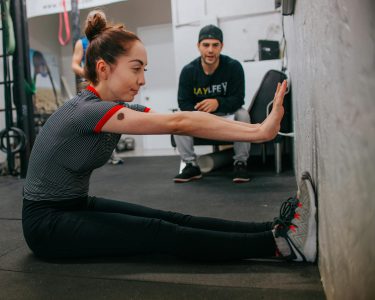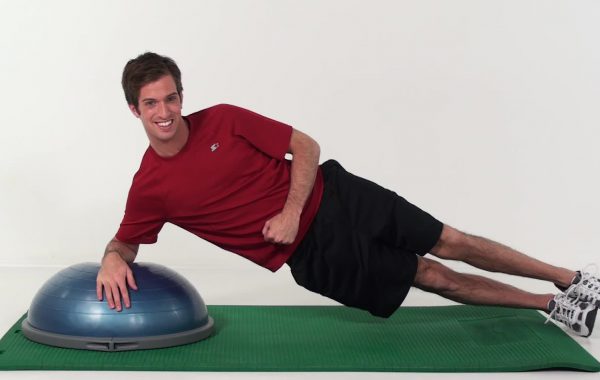The Importance of Accurate Fitness Tests
As a personal trainer, performing accurate fitness tests is one of the most critical steps in creating effective fitness programs. Proper testing helps you understand your client’s current fitness level, track progress, and set achievable goals. However, if your fitness tests are not accurate, you risk misguiding your clients, which could lead to poor results or even injury. In this article, we’ll explore five essential tips to ensure your fitness tests are precise, reliable, and beneficial for your clients.
1. Choose the Right Fitness Tests for Your Client
Fitness assessments are not one-size-fits-all. It’s important to select tests that align with your client’s goals, fitness level, and physical condition. For example, a VO2 max test may be suitable for a competitive athlete, while a simpler step test could work better for a beginner.
When selecting fitness tests:
- Assess your client’s goals. Are they aiming to improve cardiovascular endurance, strength, flexibility, or overall fitness? Therefore, identifying their needs ensures relevance.
- Consider their current physical condition. But be cautious with clients recovering from injuries or those with medical conditions.
- Use validated and widely accepted fitness assessment tools, such as the Rockport Walking Test or the Sit-and-Reach Test, because these ensure reliability.
Choosing the right tests helps ensure the results are meaningful and relevant to your client’s progress.
2. Calibrate Your Equipment Regularly
Accurate fitness testing relies heavily on well-maintained and calibrated equipment. Whether you’re using a scale, a stopwatch, or more advanced tools like heart rate monitors, regular calibration ensures the data you collect is trustworthy.
Here are some tips for equipment maintenance:
- Check for accuracy: Follow the manufacturer’s recommendations for calibration and testing. For example, weigh a known object to confirm your scale’s accuracy. So, this minimizes errors.
- Keep equipment clean: Sweat, dust, and wear can impact performance. Moreover, clean your tools regularly to ensure they function properly.
- Replace old tools: If your equipment shows signs of wear or produces inconsistent results, then it may be time for an upgrade.
Maintaining your equipment not only improves accuracy but also enhances professionalism and client trust.

Total PT Fitness Online - Contains a Vast Array of Fitness Tests
3. Follow Standardized Testing Protocols
Consistency is key to reliable fitness tests. By following standardized protocols, you can minimize variability and ensure your tests are repeatable and comparable over time.
When administering tests:
- Use clear instructions: Explain the test procedures to your client in simple terms. For example, when conducting a timed plank test, describe proper form and how the timer will work. This ensures understanding.
- Control variables: Test clients under similar conditions each time—same time of day, similar warm-up routines, and consistent rest periods. As a result, you reduce inconsistencies.
- Record details: Document test procedures, conditions, and any deviations to maintain a comprehensive record.
Standardized protocols create a reliable baseline for measuring progress and make exercise performance tracking more effective.
4. Consider the Testing Environment
The environment can significantly impact fitness test results. A noisy, crowded gym or extreme temperatures can distract clients and skew their performance.
To optimize the testing environment:
- Choose a quiet, controlled space: Select a location free from distractions and interruptions. This ensures focus.
- Monitor temperature and lighting: Ensure the area is comfortable and well-lit to promote focus and safety. Thus, clients feel at ease.
- Minimize external factors: Avoid conducting tests during high-traffic times or when the client is under undue stress. Instead, schedule sessions strategically.
Creating a conducive environment helps clients perform their best, ensuring more accurate health measurements.

5. Emphasize Test-Retest Accuracy
One of the primary goals of fitness testing is to track progress over time. For this reason, ensuring test-retest reliability is crucial.
To improve test-retest accuracy:
- Use the same protocols: Administer tests under identical conditions each time, including equipment, environment, and instructions. Therefore, results are comparable.
- Schedule tests appropriately: Allow adequate time between tests to show measurable progress while avoiding over-testing. Consequently, you prevent burnout.
- Factor in variability: Understand that external factors such as sleep, hydration, and stress can affect performance. Encourage clients to maintain consistent habits leading up to testing. This reduces unnecessary fluctuations.
Consistent testing methods allow you to confidently measure changes in fitness levels and make informed decisions about training adjustments. Reliable client fitness evaluations build a solid foundation for ongoing improvement.
Additional Considerations for Accurate Fitness Tests
Beyond the five tips above, here are some additional considerations to enhance your testing accuracy:
- Assess client readiness: Ensure clients are well-rested, hydrated, and not recovering from illness or injury before testing. So, they are prepared for optimal performance.
- Prioritize safety: Monitor clients closely to prevent injury and modify tests as needed to accommodate individual limitations. For instance, adjust for pain or discomfort.
- Educate your clients: Explain the purpose of each test and how it relates to their goals. This builds trust and helps them stay engaged in the process.
Mastering Reliable Fitness Assessments
Accurate fitness assessments are the cornerstone of effective personal training. By choosing appropriate tests, maintaining equipment, standardizing protocols, optimizing the environment, and emphasizing consistency, you can deliver reliable results that benefit your clients. Remember, fitness testing is not just about numbers—it’s about empowering your clients to achieve their goals through informed, data-driven decisions.
For more information on fitness testing protocols and best practices, check out resources from the American College of Sports Medicine (ACSM) and National Academy of Sports Medicine (NASM). These organizations provide valuable tools and insights to help you refine your approach.
With these tips in hand, you’re ready to elevate your fitness testing skills and help your clients reach their full potential.
You may also be interested in:
Ready to see how easy it is to train more clients, make more money and make your job easier?
Total PT Fitness software elevate your brand and can transform your personal training business. Sign up for your very own free 2 week trial. No obligation, no credit card required.
Professional Software for Personal Trainers and Wellness Professionals
Video exercise, fitness testing, nutrition counseling and phone app for clients

